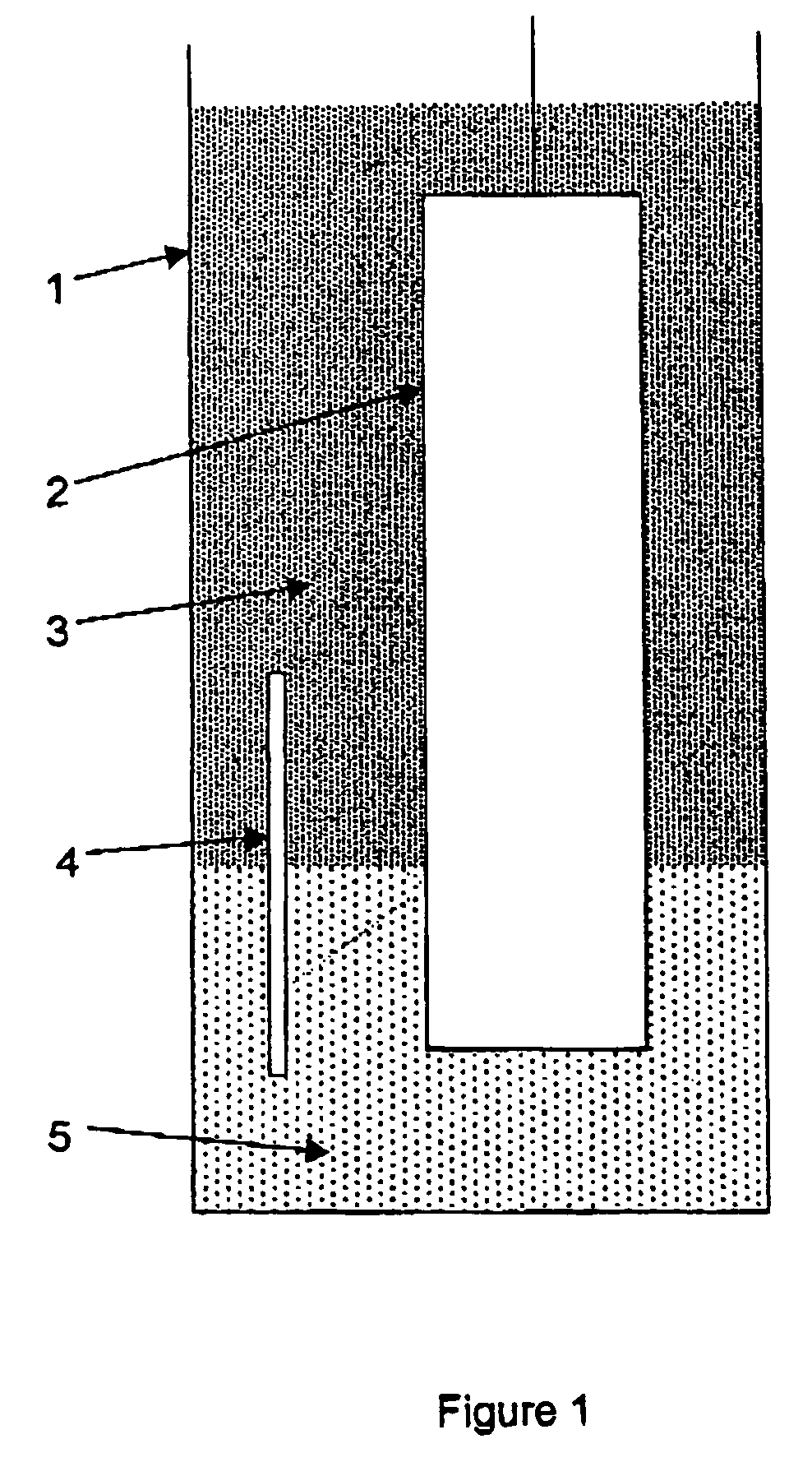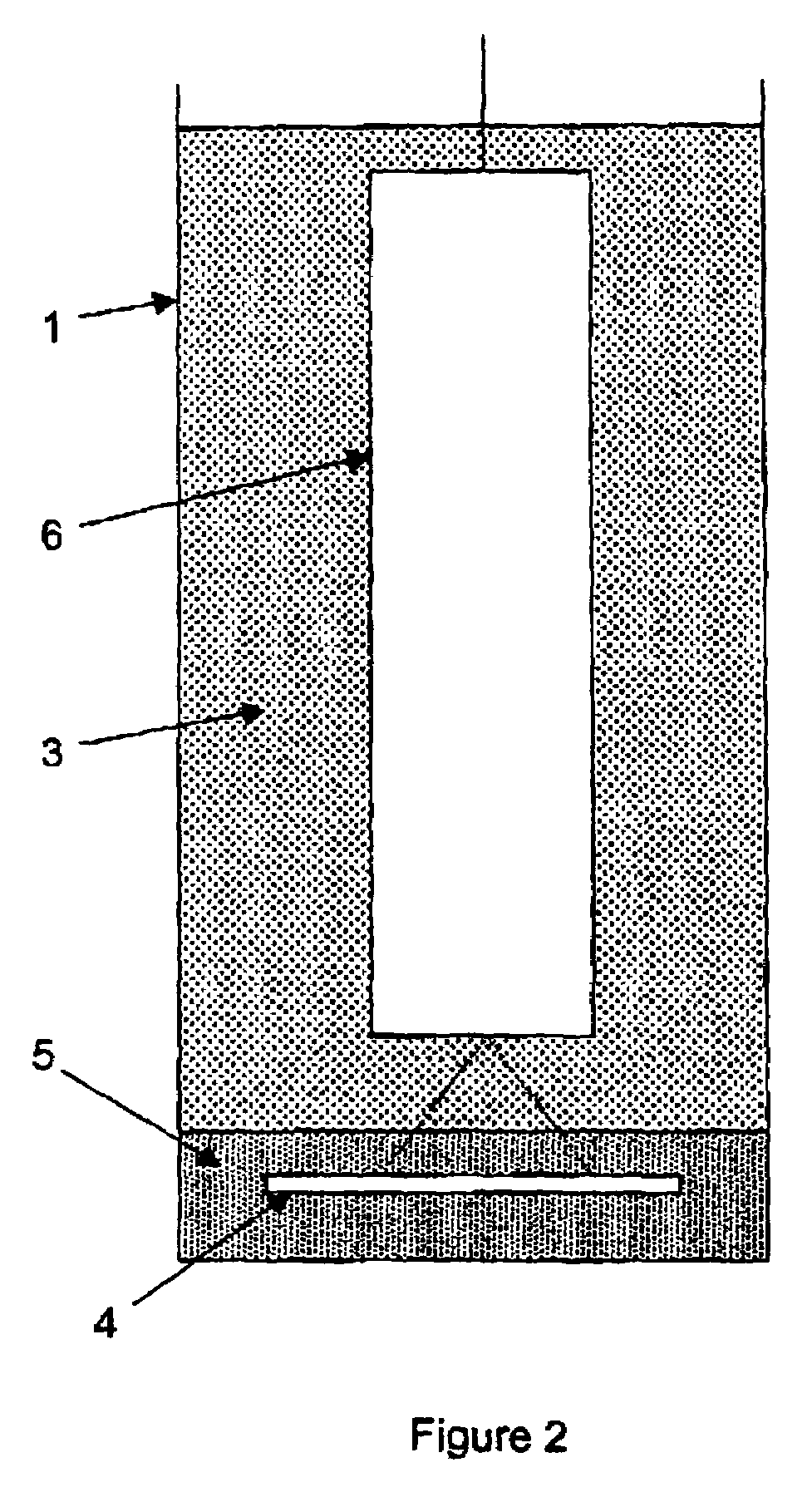Imaging sensor optical system
an image sensor and optical system technology, applied in the field of optical system image sensors, can solve the problems of limited transmission in these fluids, restricting the operation of a practical sensor to close range,
- Summary
- Abstract
- Description
- Claims
- Application Information
AI Technical Summary
Benefits of technology
Problems solved by technology
Method used
Image
Examples
Embodiment Construction
[0066]FIG. 1 shows a schematic diagram of a structure 1 in which a sideways-looking embodiment of the image sensor 2 is immersed in medium 3 and medium 5. The target 4 is viewed by the image sensor while straddling the boundary between the two media. The figure shows the image sensor deployed in the vertical axis, but, with an appropriate delivery mechanism, it may be deployed in any orientation.
[0067]To view and image the target 4, the image sensor 2 emits radiation at wavelengths which are transmitted by each media 3 and 5. For example, if medium 5 is crude oil, and medium 3 is water, the sensor will emit radiation in the 1500–1650 nm waveband, and also in the visible-1350 nm waveband. This may be achieved in various ways. For example, sensor 2 may comprise light emitting or laser diodes, or groups of diodes, which operate in the respective wavebands and, for simultaneous imaging in both media, both diodes or groups of diodes will be operated as illumination sources. Alternatively...
PUM
| Property | Measurement | Unit |
|---|---|---|
| wavelength | aaaaa | aaaaa |
| wavelengths | aaaaa | aaaaa |
| power | aaaaa | aaaaa |
Abstract
Description
Claims
Application Information
 Login to View More
Login to View More - R&D
- Intellectual Property
- Life Sciences
- Materials
- Tech Scout
- Unparalleled Data Quality
- Higher Quality Content
- 60% Fewer Hallucinations
Browse by: Latest US Patents, China's latest patents, Technical Efficacy Thesaurus, Application Domain, Technology Topic, Popular Technical Reports.
© 2025 PatSnap. All rights reserved.Legal|Privacy policy|Modern Slavery Act Transparency Statement|Sitemap|About US| Contact US: help@patsnap.com



